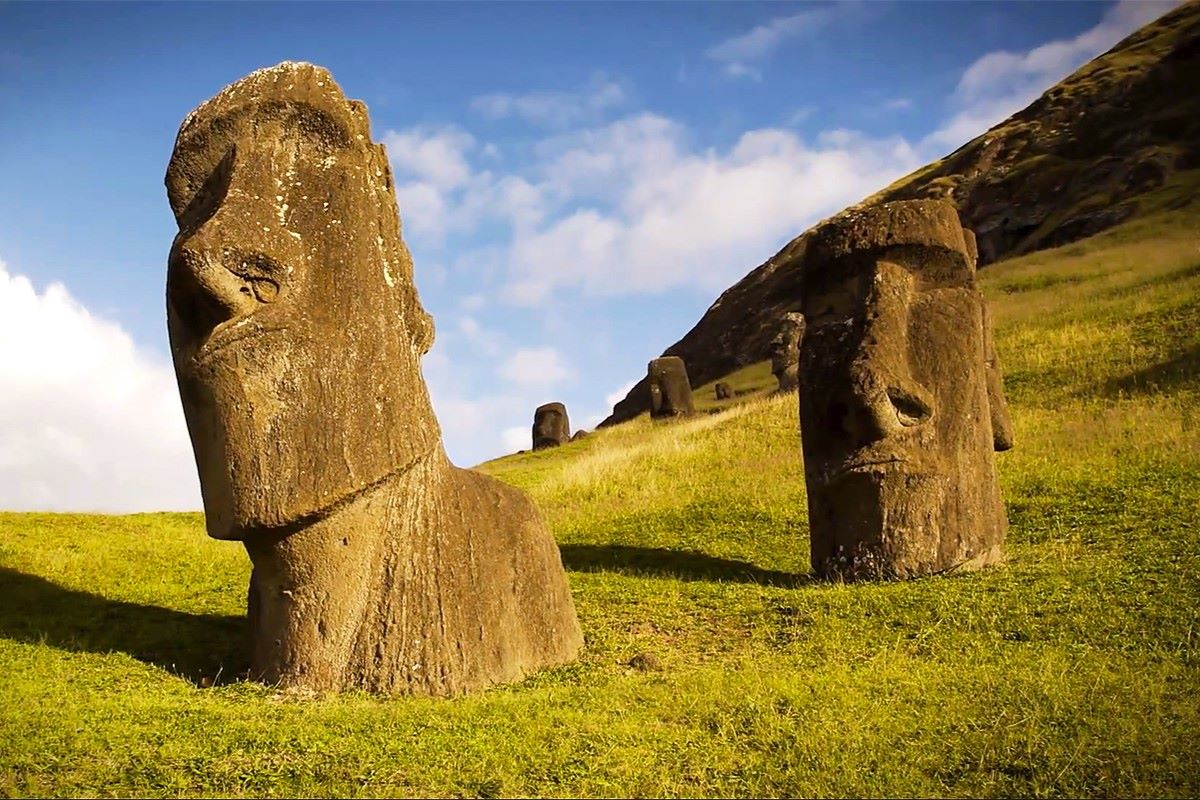Secrets Of Easter Island’s Past

Have you ever wondered about the mysteries of Easter Island? This remote island, located in the Pacific Ocean, is famous for its giant stone statues called Moai. These statues have puzzled historians and archaeologists for years. Who built them? How did they move these massive stones? What purpose did they serve? Easter Island's past is filled with intriguing stories and unanswered questions. From the island's first settlers to the rise and fall of its unique culture, there's so much to learn. Let's dive into the secrets of this fascinating place and uncover the history behind those iconic statues.
Mysteries of the Moai Statues
Easter Island, known for its enigmatic Moai statues, holds secrets that captivate historians and travelers alike. These colossal stone figures, scattered across the island, tell a story of a civilization long gone. Let's uncover some of the most intriguing sites where these statues stand.
Rano Raraku Quarry
- This volcanic crater served as the main quarry for the Moai statues. Here, you can see statues in various stages of completion, giving insight into the carving process.
Ahu Tongariki
- The largest ceremonial platform on the island, Ahu Tongariki, boasts 15 restored Moai statues. It's a breathtaking sight, especially at sunrise.
Ahu Akivi
- Unique for its inland location, Ahu Akivi features seven Moai statues that face the ocean. Legend says they represent the seven explorers sent by the island's first king.
Ancient Petroglyphs and Rock Art
Beyond the Moai, Easter Island is rich with petroglyphs and rock art that offer glimpses into the island's cultural heritage. These carvings depict various aspects of the Rapa Nui people's life and beliefs.
Papa Vaka
- This site features large stone slabs adorned with petroglyphs of fish, canoes, and other marine life, reflecting the islanders' deep connection to the sea.
Orongo
- Perched on the edge of a volcanic crater, Orongo is a ceremonial village with numerous petroglyphs related to the Birdman cult, a significant part of Rapa Nui mythology.
The Mysterious Caves
Easter Island's caves served as shelters, hiding places, and even burial sites. Exploring these caves reveals more about the island's past and the ingenuity of its inhabitants.
Ana Te Pahu
- Known as the "Banana Cave," Ana Te Pahu is the largest cave on the island. It features underground gardens where ancient islanders grew crops.
Ana Kakenga
- Also called the "Two Windows Cave," Ana Kakenga offers stunning views of the ocean through its two natural openings. It was likely used as a refuge during times of conflict.
The Enigmatic Rano Kau Crater
Rano Kau, one of the island's three main volcanoes, is a site of both natural beauty and archaeological significance. Its massive crater lake and surrounding cliffs hold many secrets.
Rano Kau Crater Lake
- This freshwater lake within the crater is a rare sight on the island. It supports unique plant life and offers a serene contrast to the rugged coastline.
Motu Nui Islet
- Visible from the cliffs of Rano Kau, Motu Nui played a crucial role in the Birdman competition. Competitors swam to this islet to retrieve the first sooty tern egg of the season.
The Lost Civilization of Rapa Nui
The Rapa Nui people, who created the Moai and other cultural artifacts, left behind a legacy that continues to intrigue researchers. Their society faced many challenges, leading to its eventual decline.
Ahu Vinapu
- This site features stonework that resembles Inca masonry, suggesting possible contact between Easter Island and South America. The precise construction techniques remain a mystery.
Puna Pau
- The quarry where the red scoria stone used for the Moai's topknots, or pukao, was sourced. These topknots added a distinctive feature to the statues.
Vaihu
- An unrestored site where toppled Moai lie face down, offering a glimpse into the island's turbulent history and the eventual downfall of the statue-building era.
Easter Island's Mysteries Await
Easter Island's ancient secrets continue to fascinate. The moai statues, with their imposing presence, tell stories of a lost civilization. The island's unique culture and history offer a glimpse into the past, inviting visitors to explore and learn. From the Rapa Nui people to the mysterious carvings, every corner of this island holds a piece of the puzzle.
Visiting Easter Island isn't just a trip; it's a journey through time. The landscape, the artifacts, and the legends all contribute to an unforgettable experience. Whether you're an adventurer, a history buff, or someone seeking new experiences, Easter Island has something for everyone.
Plan your visit, immerse yourself in the rich history, and uncover the mysteries that make Easter Island a truly unique destination. The island's past is waiting for you to discover.

